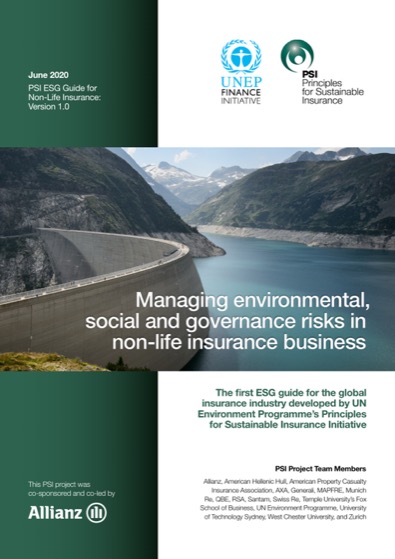As risk managers, insurers and investors, the insurance industry plays an important role in promoting economic, social and environmental sustainability—or sustainable development. With the adoption of the UN Sustainable Development Goals (SDGs), Paris Agreement on Climate Change, and Sendai Framework for Disaster Risk Reduction in 2015, and the upcoming Post-2020 Global Biodiversity Framework, there is growing pressure and urgency across all sectors of society to respond and find solutions to sustainability challenges the world is facing.
Environmental, social and governance (ESG) issues—also known as sustainability issues pose a shared risk to insurers, communities, businesses, cities, governments and society at large, providing a strong incentive for innovation and collaboration. Some ESG issues have varying implications, with some increasingly being recognised to be potentially financially material (e.g. climate change, ecosystem degradation, pollution).
This document is a result of a multi-year PSI initiative to develop the first global guide to manage ESG risks in risk assessment and insurance underwriting. It has an initial focus on non-life insurance business—also known as property and casualty insurance business.
The aims of this guide are to:
1. Provide optional guidance to insurance industry participants in developing approaches to assess ESG risks in non-life insurance business transactions, particularly industrial and commercial insurance business
2. Support clients, intermediaries and other stakeholders in facilitating ESG-related information which might be required during the ESG due diligence of transactions
3. Highlight the materiality of ESG risks to various lines of business and economic sectors, including characteristics which might affect the ability to assess and mitigate such risks
4. Address growing concerns by stakeholders across society (e.g. NGOs, investors, governments) on ESG risks and articulate the peculiarities of the insurance business
5. Demonstrate the valuable role the insurance industry plays in the global economy and society, and strengthen the industry’s contribution to sustainable development
ESG risks can vary by country or region, line of business, type of cover, economic sectors, client characteristics, over time, and due to other factors. The guide helps draw attention to this complex range of considerations and how some industry participants are going about their integration of ESG risk factors into non-life risk assessment and underwriting.



